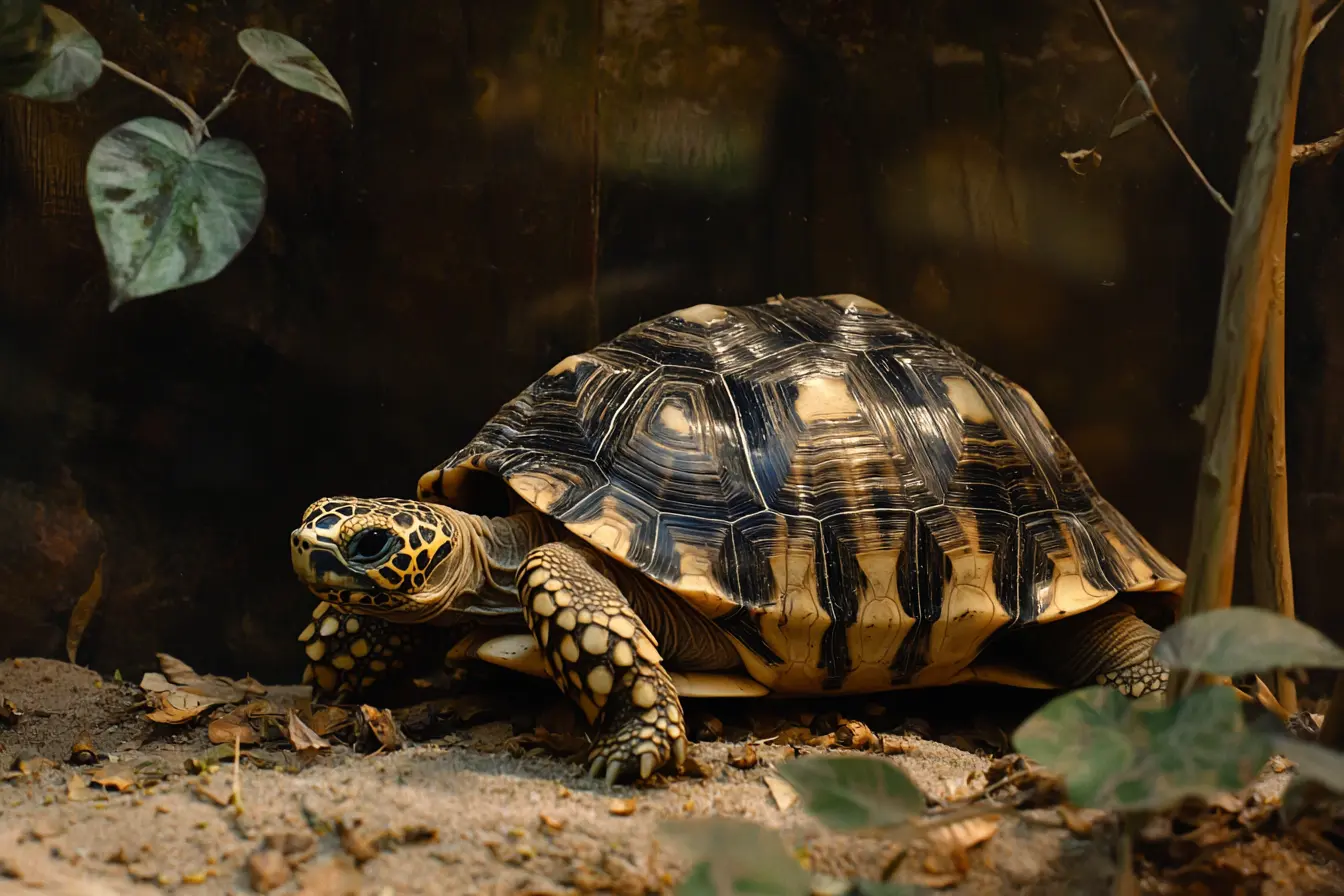
How to Hibernate Your Tortoise: A Complete Guide
Hibernation is a natural process for many tortoise species, allowing them to survive cold weather by slowing their metabolism. As a tortoise owner, you must carefully prepare and monitor your pet to ensure a safe and successful hibernation. This guide covers everything you need to know.
Benefits of Hibernating Your Tortoise
Hibernation is not just a survival mechanism for tortoises in the wild; it also offers several health benefits for pet tortoises when done correctly.
- Supports natural behaviour by allowing the tortoise to follow its biological instincts, reducing stress and promoting overall well-being.
- Promotes a long and healthy life by regulating metabolism and reducing the risk of certain age-related illnesses.
- Prevents unnatural growth rates that can occur in tortoises kept warm year-round, helping to avoid shell deformities and metabolic bone disease.
- Helps maintain a healthy weight by preventing overeating during the colder months, reducing the risk of obesity-related health issues.
- Supports reproductive health, as many species require a hibernation period for successful breeding.
- Provides rest for the digestive system, allowing the gut to clear out and reset.
- Encourages natural seasonal activity, leading to more energy and alertness when the tortoise wakes in spring.
By allowing your tortoise to hibernate safely, you are supporting their natural lifecycle and long-term health.
Does Your Tortoise Need to Hibernate?
Not all tortoise species hibernate. Common hibernating species include:
- Hermann’s tortoise (Testudo hermanni)
- Greek tortoise (Testudo graeca)
- Marginated tortoise (Testudo marginata)
- Russian tortoise (Testudo horsfieldii)
Species such as Leopard tortoises and Sulcata tortoises do not hibernate and must be kept warm year-round.
Only healthy tortoises should hibernate. If your tortoise is underweight, sick, or younger than three years old, hibernation can be dangerous. If unsure, consult a reptile vet.
Preparing for Hibernation
Proper preparation is essential to ensure your tortoise stays safe.
Health Check
- Get a vet check-up to ensure your tortoise is healthy enough for hibernation.
- Weigh your tortoise regularly and use the Jackson Ratio (a weight-to-length ratio) to determine if they have enough reserves.
Fasting and Hydration
Before hibernation, tortoises must clear their digestive system to prevent food rotting inside their gut.
- Small tortoises (under 1kg) should fast for two to three weeks.
- Larger tortoises (over 1kg) should fast for four to six weeks.
During fasting:
- Provide daily warm baths to encourage defecation and maintain hydration.
- Gradually reduce temperatures to slow metabolism.
Choosing a Hibernation Method
There are two main methods:
- Fridge hibernation is the safest and most controlled method.
- Box hibernation is a more natural method but harder to regulate.
The fridge method is highly recommended because it maintains a stable temperature and protects against predators, damp conditions, and temperature fluctuations.
Fridge Hibernation: The Best Method
A dedicated mini fridge is ideal for hibernation. Household fridges fluctuate too much and can be unsafe.
Step-by-Step Guide
- Set the temperature to 5°C (41°F) a few days before.
- Prepare a ventilated box (plastic or cardboard with air holes), lined with dry soil, paper, or sand.
- Place your tortoise inside the box and then put this inside a larger insulated box for added protection.
- Monitor temperature and humidity regularly.
- Weigh your tortoise weekly. A loss of more than 1% of body weight per month suggests dehydration or illness.
Box Hibernation: A Natural Alternative
Box hibernation is a more traditional method, where the tortoise is placed in an insulated box and kept in a cool, frost-free location. It requires careful monitoring to ensure temperatures remain stable.
Step-by-Step Guide
- Choose a well-ventilated, sturdy box (such as a wooden or plastic container with air holes).
- Line the box with a thick layer of dry soil, shredded paper, or sand to allow burrowing.
- Place the tortoise inside and cover them lightly with more bedding material.
- Place the smaller box inside a larger insulated box (such as a polystyrene box) to help maintain a stable temperature.
- Store the box in a cool, quiet, frost-free location such as a shed, garage, or basement.
- Ensure the temperature stays between 3°C and 10°C. Anything below 3°C risks freezing, and above 10°C could wake your tortoise too early.
- Check on your tortoise regularly by gently opening the box to monitor temperature and weight.
During Hibernation: Monitoring Your Tortoise
- Temperature should stay between 3°C and 5°C for fridge hibernation, and between 3°C and 10°C for box hibernation.
- Avoid sudden movements that could wake your tortoise.
- Check for signs of dehydration such as sunken eyes or significant weight loss.
- Weigh your tortoise weekly. Consistent weight is a good sign.
What to Do If Your Tortoise Wakes Up Early
Tortoises can sometimes wake up unexpectedly during hibernation. This can be caused by temperature fluctuations, disturbance, or health issues. If your tortoise wakes up early, follow these steps:
Determine the Cause
- If the hibernation area is consistently above 10°C, your tortoise may wake up naturally.
- Noise, vibrations, or handling can sometimes rouse a tortoise.
- If your tortoise is unwell or dehydrated, they may wake up early.
Check Their Health
- Weigh them – significant weight loss (more than 1% per month) can indicate dehydration or illness.
- Look for signs of dehydration – sunken eyes, wrinkled skin, or a soft shell.
- Check breathing – laboured breathing or mucus could suggest respiratory issues.
Decide Whether to Re-Hibernate or Keep Awake
- If they wake up early but are healthy, and the temperature has temporarily risen, you may be able to return them to hibernation. Ensure the temperature is stable (between 3–5°C for fridge hibernation, 3–10°C for box hibernation).
- If they are unwell or losing weight, do not re-hibernate them. Instead, wake them up fully and begin post-hibernation care.
If You Cannot Hibernate Them Again
- Keep them in a warm, well-lit enclosure with a UVB lamp and heat source.
- Maintain a day temperature of 25–30°C and a cooler night temperature.
- Ensure they have access to fresh water and appropriate food.
Waking Your Tortoise After Hibernation
After eight to twelve weeks, it’s time to wake your tortoise.
- Move them to a warmer room and let them wake naturally.
- Give a warm bath immediately to rehydrate them.
- Encourage eating within the first few days.
- Monitor weight and behaviour. If your tortoise doesn’t eat within a week, contact a vet.
Common Hibernation Problems
- If your tortoise loses more than 1% of body weight per month, they may be dehydrated. Increase humidity or wake them early if needed.
- If they are not waking up, the temperature may be too low. Move them to a warmer area and gently stimulate them.
- If they refuse food, they may be sluggish after hibernation. Offer favourite foods and consult a vet if the issue persists.
- If their shell is soft or their eyes appear sunken, they may be dehydrated or unwell. Seek veterinary help immediately.
Final Tips for a Safe Hibernation
- Start preparation early, at least six weeks before hibernation.
- Always weigh and monitor your tortoise.
- Use the fridge method for the safest results, or ensure stable conditions if using the box method.
- If unsure, consult a reptile vet.
Hibernation can be a safe and natural process when done correctly. By following these steps, you can ensure your tortoise stays healthy and ready for the warmer months ahead.
Contents
- Benefits of Hibernating Your Tortoise
- Does Your Tortoise Need to Hibernate?
- Preparing for Hibernation
- Fridge Hibernation: The Best Method
- Box Hibernation: A Natural Alternative
- During Hibernation: Monitoring Your Tortoise
- What to Do If Your Tortoise Wakes Up Early
- Waking Your Tortoise After Hibernation
- Common Hibernation Problems
- Final Tips for a Safe Hibernation
Tags
Related Vets
Vets near you
Speciality vets
- Aquatics vet specialists
- Birds vet specialists
- Camelids vet specialists
- Cats vet specialists
- Cattle vet specialists
- Deer vet specialists
- Dogs vet specialists
- Equines vet specialists
- Exotic vet specialists
- Goats vet specialists
- Pigs vet specialists
- Poultry vet specialists
- Sheep vet specialists
- Small Mammals vet specialists
- Wild vet specialists











